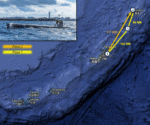Redwire Corporation and Red Cat Holdings have jointly unveiled a strategic drone integration concept designed to support the U.S. Army’s evolving needs across multiple operational echelons. The initiative focuses on modularity, interoperability, and rapid field adaptability—key requirements as the Army modernizes its unmanned aerial systems (UAS) portfolio under programs like FTUAS and the broader C5ISR modernization effort.
Strategic Context: Evolving U.S. Army UAS Requirements
The U.S. Army is undergoing a significant transformation of its unmanned capabilities to better address peer-level threats in contested environments. Central to this effort is the Future Tactical Unmanned Aircraft System (FTUAS) program, which aims to replace legacy RQ-7B Shadow systems with more agile, runway-independent platforms that can operate in GPS-denied environments while supporting brigade combat teams (BCTs).
Simultaneously, the Army is expanding its use of small tactical drones—ranging from Group 1 FPV quadcopters to Group 3 ISR platforms—to support company- and platoon-level operations. This layered approach requires not only diverse airframes but also unified command-and-control (C2) architectures capable of integrating data feeds from multiple sources into a common operating picture.
The joint concept by Redwire and Red Cat appears aimed at addressing this exact challenge by proposing a modular drone ecosystem that can scale across echelons while maintaining interoperability with existing C4ISR infrastructure.
Key Components of the Integration Concept
While technical details remain limited in public releases, both companies have highlighted several core pillars of their proposed solution:
- Modular Payload Architecture: The system will allow rapid swapping of mission payloads—ISR sensors (EO/IR), EW modules, comms relays—enabling drones to be tailored for reconnaissance, targeting support, or electronic warfare roles.
- Interoperable C2 Backbone: The concept emphasizes compliance with open architecture standards such as Modular Open Systems Approach (MOSA) and NATO STANAG protocols to ensure seamless data integration into existing battlefield networks like ATAK or Nett Warrior.
- Echelon-Scalable Platforms: From dismounted squad-level micro-UAS up to brigade-level Group 3 drones with extended endurance and range capabilities—all integrated under a unified framework.
- AI-Enabled Autonomy: Leveraging onboard processing for real-time target recognition or route planning in denied environments is reportedly under development as part of future iterations.
Industry Collaboration: Roles of Redwire and Red Cat
Redwire Corporation, traditionally known for space infrastructure technologies including avionics and deployable structures for NASA missions, brings expertise in modular electronics and ruggedized systems engineering. Its pivot toward terrestrial defense applications reflects broader trends among space-tech firms seeking dual-use applications in defense markets.
Red Cat Holdings, through its subsidiary Teal Drones (manufacturer of the Golden Eagle sUAS), has positioned itself as a key player in secure American-made drones authorized under DoD’s Blue sUAS program. Teal’s platforms are already fielded by various units within SOCOM and the U.S. Marine Corps for ISR missions.
The collaboration suggests that Redwire may focus on developing modular avionics backbones or sensor interfaces while Red Cat provides airframes and flight control software optimized for tactical use cases.
Tactical Implications Across Echelons
If successfully developed and adopted by the Army acquisition community, this integrated drone concept could streamline logistics chains by reducing platform proliferation while enhancing mission flexibility at all levels:
- Squad/Platoon Level: FPV-style quadcopters or micro-UAVs equipped with EO/IR payloads could provide organic ISR without external tasking delays.
- Company/Battalion Level: Medium-range fixed-wing VTOL drones could offer persistent overwatch or act as comms relays during dispersed operations.
- BCT Level: Larger Group 3-class UAVs with modular EW or SIGINT payloads could support shaping operations ahead of maneuver elements or serve as airborne nodes within Joint All-Domain Command & Control (JADC2) frameworks.
Status Within Procurement Ecosystem
No formal contract announcements have yet been made linking this concept directly to current programs like FTUAS Inc II or Short Range Reconnaissance Tranche II competitions; however, both companies have signaled intent to align their offerings with ongoing Other Transaction Authority (OTA) solicitations from PEO Aviation and PEO Soldier.
The emphasis on MOSA compliance may also position the joint solution favorably within emerging Defense Innovation Unit (DIU)-led efforts to standardize plug-and-play architectures across DoD’s tactical drone fleet—a key concern following interoperability issues seen during recent multinational exercises such as Project Convergence and EDGE23.
Pacing Threats Drive Modularity Focus
The push toward modularity is not merely doctrinal—it reflects hard lessons learned from Ukraine’s battlefield use of commercial off-the-shelf drones repurposed rapidly for strike or jamming missions against Russian forces. The ability to reconfigure UAV roles dynamically without full system replacement has proven decisive in adapting TTPs mid-conflict—a capability now being mirrored in Western force design philosophies.









